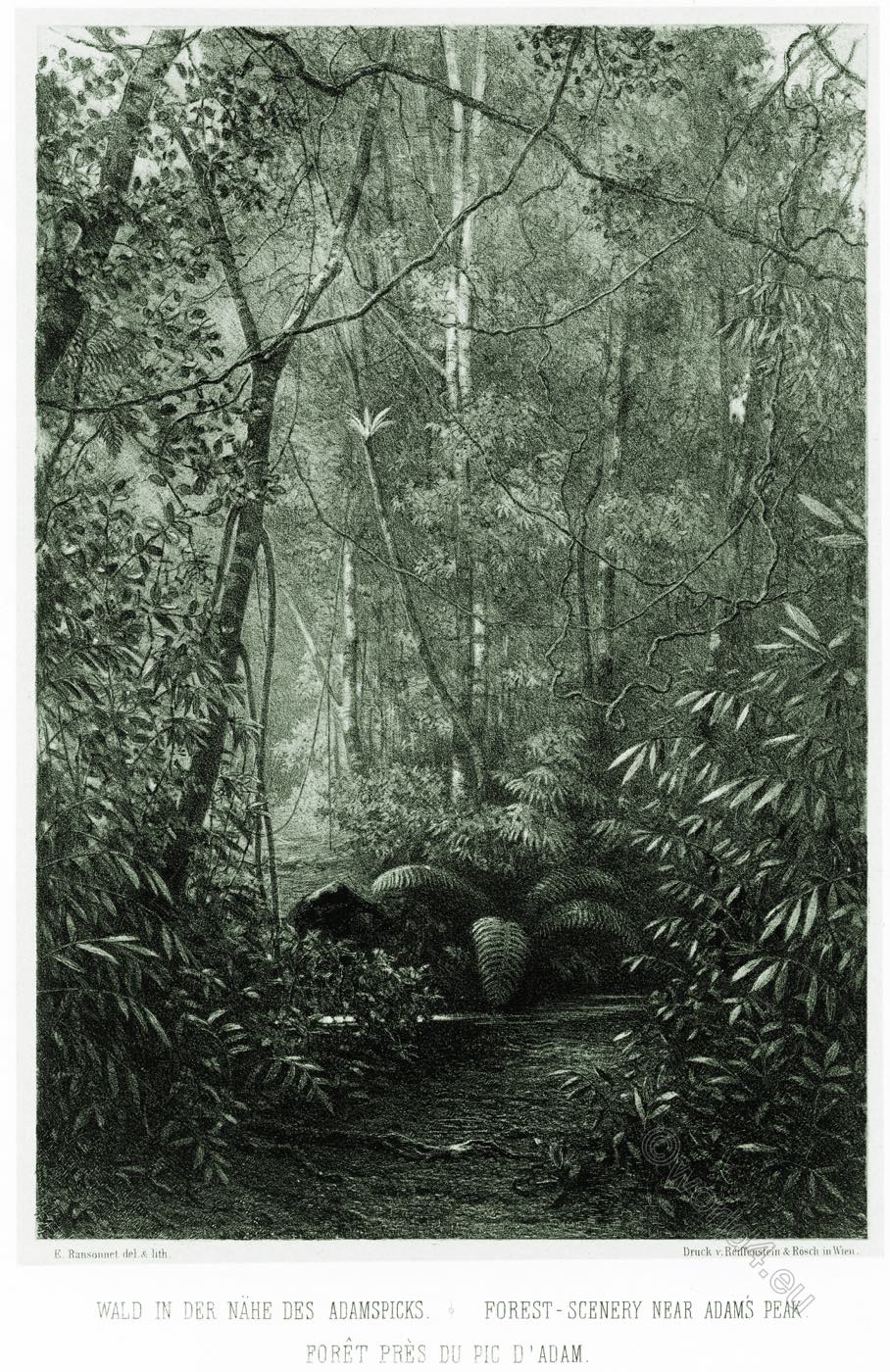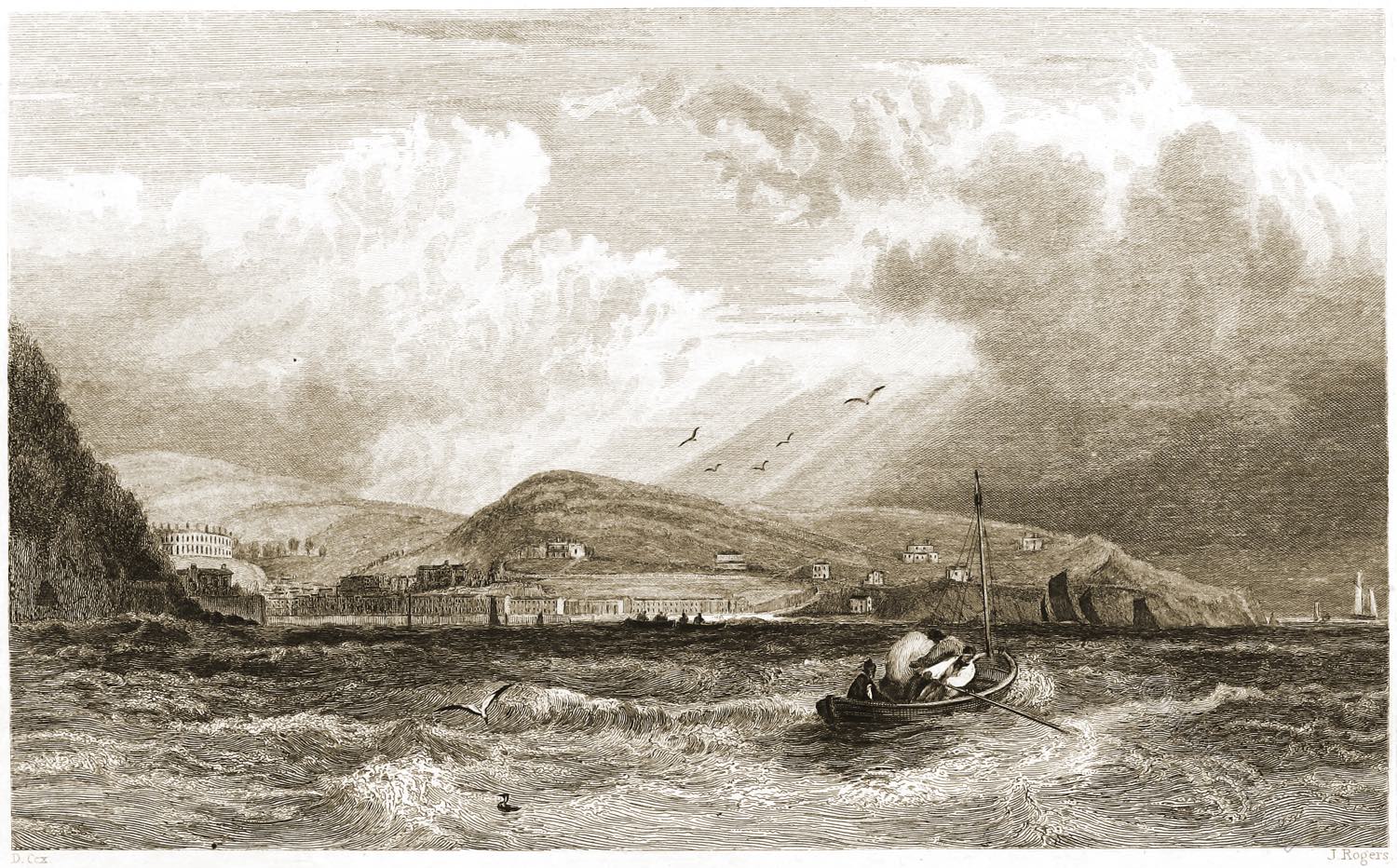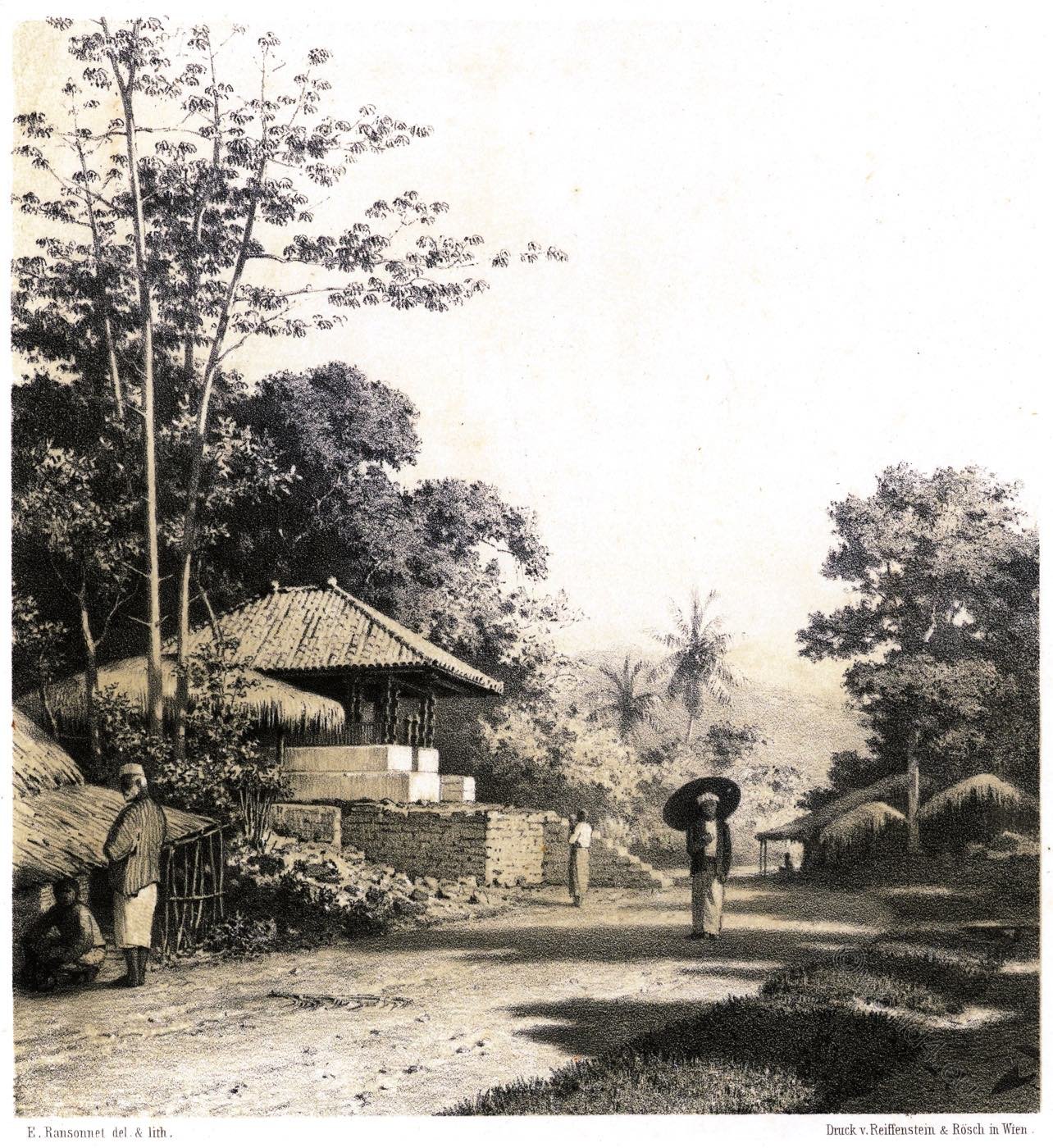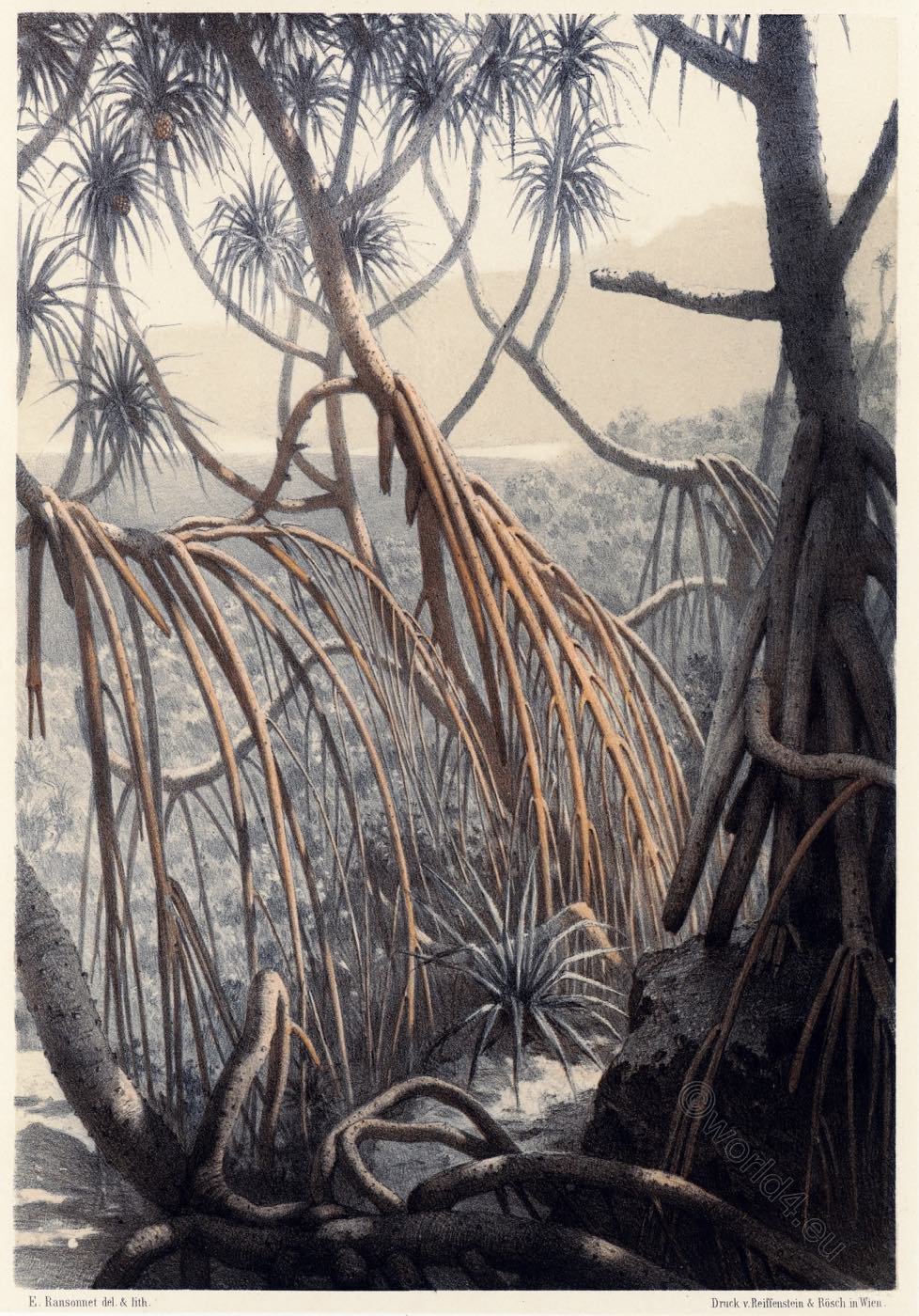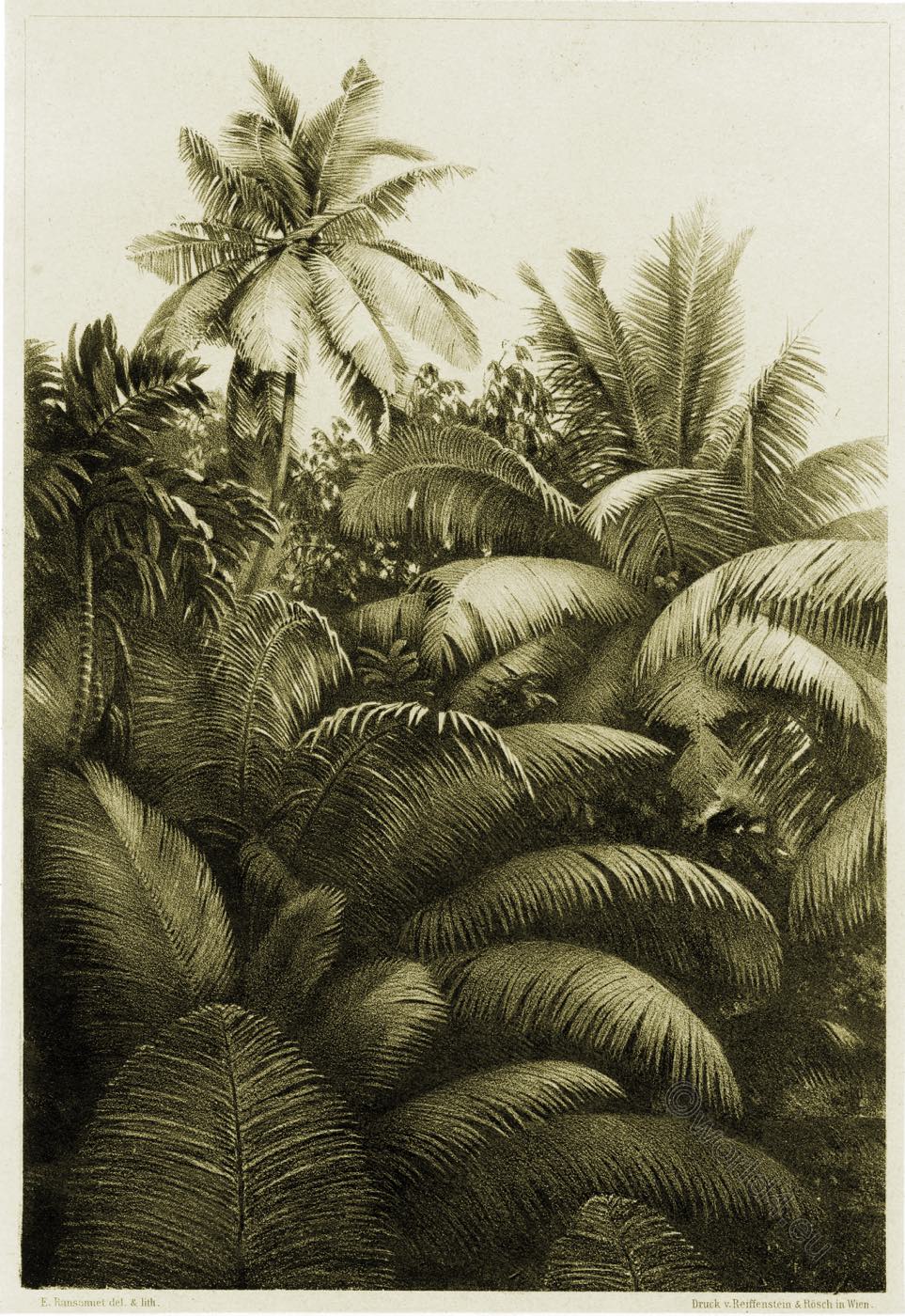
PLATE VI.
COCONUT PALM
In no part of the world does the coconut palm attain such perfection and beauty as in Ceylon and nothing is more enchanting to the eye of the European than a grove of this useful tree.
The coconut palm (Cocos nucifera) is a tropical palm plant on which the coconut grows. Cocos nucifera is the only species of the genus. There are different varieties. Coconut palms have been cultivated for at least 3000 years. The word coco goes back to late Latin coccus via Spanish and Portuguese coco and finally to ancient Greek κόκκος kókkos, which means “core” or “berry”.
For thousands of years, the coconut palm has provided the inhabitants of tropical coasts with an excellent source of food and raw materials: with its fruits as nutritious food and drink (raw or fermented), its wood as building material for huts, its leaves as roofing, its fibres for weaving house walls, baskets, mats, ropes and the dry coconut shells as fuel.
The coconut palm demands high temperatures and is sensitive to frost. It is a palm tree of the warm and humid tropics. The main distribution area and the main growing areas are located between 15 degrees south and 15 degrees north latitude and have an average annual temperature of 27 degrees Celsius. Furthermore, the mean temperature of the coolest month must not be below 20 degrees Celsius.
Coconut palms are cultivated throughout the tropical belt, for example in the tropical regions of Asia – the Philippines, Indonesia, Sri Lanka and South India – as well as in Africa and along coasts and rivers in South America. Along river courses they reach up to 150 km inland.
The spread was partly natural and partly man-made. The original home of the coconut palm probably stretches from continental South East Asia to Indonesia and the Indian subcontinent. Coconuts can be driven long distances across the sea and, washed ashore again, take root. Some coconuts, which had drifted far over the sea, were supposedly still able to germinate afterwards. However, the fruit does not survive indefinitely in salt water. It has been proven that after 100 days in salt water there is still no impairment of the germination capacity.
A spread of the species beyond Southeast Asia and India was probably largely due to man. Polynesian sailors already brought coconuts and their other food plants and farm animals with them when they settled the Pacific islands. Austronesian settlers introduced the coconut palm to Madagascar, Arab and Persian sailors brought it to the East African coasts. The coconut palm reached the American continent very late. It may have reached the Pacific coast of Panama by itself or it was introduced by Polynesian sailors. European sailors eventually introduced it to the Caribbean and the Pacific coast of the rest of Central America.
Since the 1980s, the death of coconut palms (lethal yellowing), possibly caused by microbes transmitted by insects, has been observed worldwide, especially in the Caribbean.
Source: Sketches of the inhabitants, animal life and vegetation in the lowlands and high mountains of Ceylon. As well as of the submarine scenery near the coast taken from a diving bell by the Baron Eugène de Ransonnet (Eugen Freiherr von Ransonnet-Villez, 1838 in Hietzing bei Wien; † 28. Juni 1926 in Nußdorf am Attersee). Printed for the author by Gerold & sold by Robert Hardwicke, London 1867.
Related
Discover more from World4 Costume Culture History
Subscribe to get the latest posts sent to your email.


